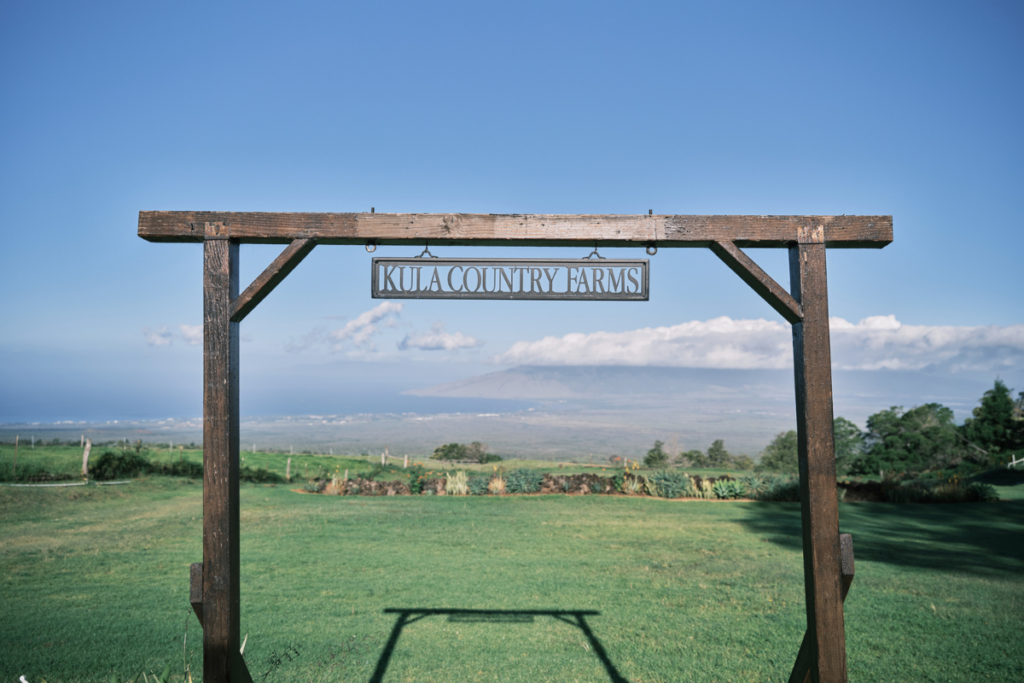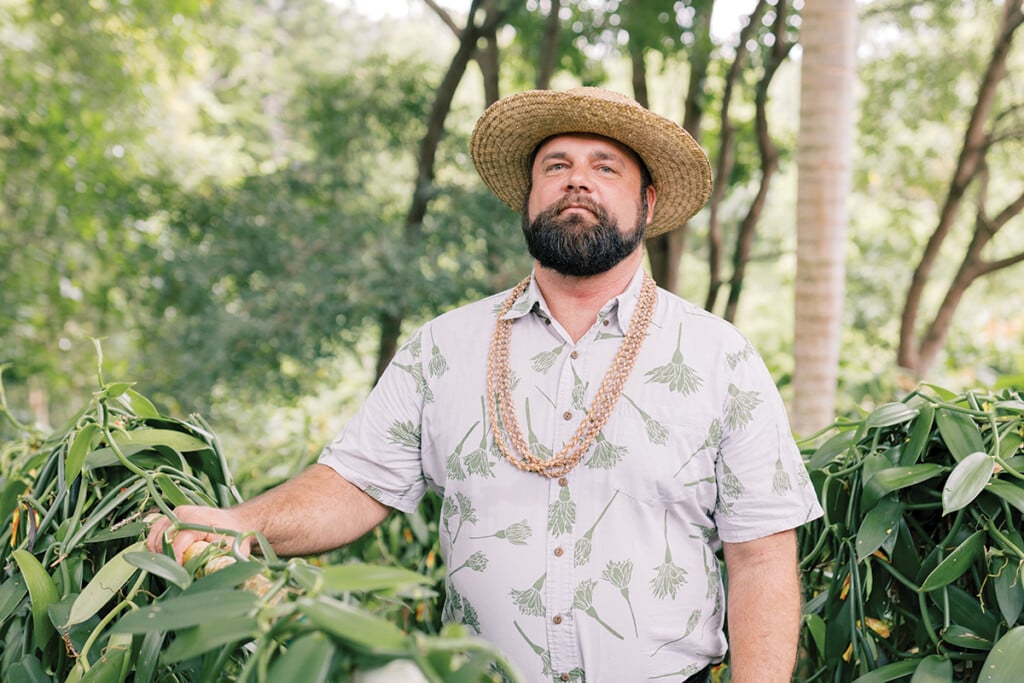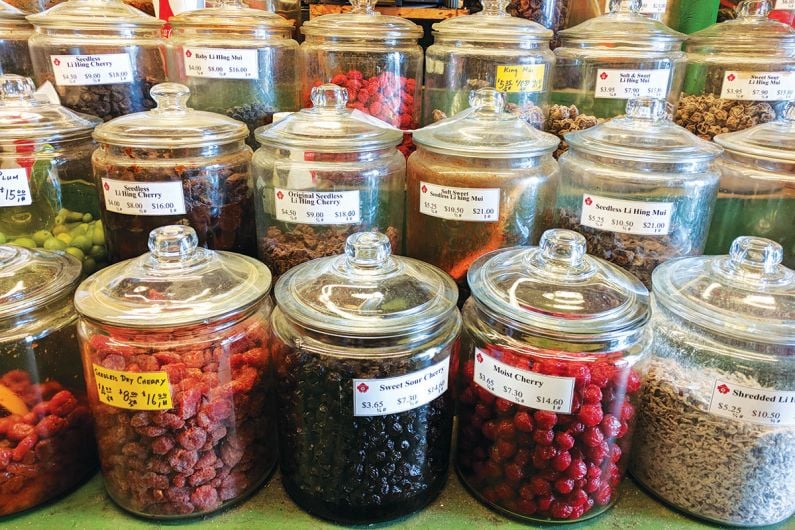Chasing Kiwikiu

“You might want to wear these,” said Laura Berthold, handing me a pair of rain pants.
Four days of rain had triggered the cancellation of two previous outings we’d planned to explore Waikamoi Preserve, a sanctuary for native Hawaiian plants and animals on the slopes of Haleakalā volcano. Berthold and I were finally meeting under sunny skies at Hosmer’s Grove in Haleakala National Park, the air above us as crisp and clear as only the day after a tropical storm can be. A research technician with the Maui Forest Bird Recovery Project, Berthold leads teams into the high-elevation, 8,951-acre rainforest preserve managed by The Nature Conservancy.
“It’s going to be muddy,” explained the tall, lanky bird researcher, sliding her long legs into her own pair of rain pants. Hefting a backpack onto her shoulders, she headed around a locked gate. Rain and mud are two things found in abundance in Waikamoi’s rainforest. We were in search of a rarity: the kiwikiu, Maui’s most critically endangered forest bird.
Some 5 million years ago, before the island of Maui had even pushed above the ocean surface, a finchlike bird arrived in the existing Hawaiian Islands. In order to survive, the lone species evolved, most dramatically in bill shape and size, into 54 other species. Due to habitat destruction, introduced predators and ungulates, avian disease and climate change, more than two-thirds of Hawaii forest birds classified as endemic—found here and nowhere else in the world—have become extinct. On Maui, only six endemic species remain. The kiwikiu is one of them.

Photo courtesy: Maui Forest Bird Recovery Project
The kiwikiu’s high-elevation habitat and low population numbers—only 500 individuals exist in the wild—make it fairly elusive. Its natural behavior makes it even harder to find. The kiwikiu nests only in native trees and eats only native insects. It establishes a fairly large home range, after setting up house defending areas as large as 12 acres. And, reproductively, kiwikiu typically form monogamous relationships and raise a single fledgling per year.
Our day’s objective was to find one fledgling in 14 square miles of steep rainforest. Then, catch it and band it.
The Maui Forest Bird Recovery Project began focusing its efforts on the kiwikiu, also known as the Maui parrotbill and protected by the Endangered Species Act, in 2006. To start, the group used a technique employed worldwide in avian conservation: banding. Once kiwikiu are outfitted with unique leg bands, field researchers like Berthold, aided by really good binoculars, are able to identify individual birds without recapturing them, answering important recovery questions of population size, survival, reproduction and density.
The challenges to the task beyond the species’ natural biological characteristics? An adult kiwikiu measures all of five to six inches in length and has an olive-green back and yellow belly, a color scheme that is a near-perfect match to its forest home.
Fortunately, Berthold knew exactly where to go.

After a good bit of hiking, with long, wet fronds of ‘ama‘u ferns slapping our legs as we trekked, Berthold stopped in the middle of a narrow trail. She whispered something I couldn’t hear and took off, gliding over fallen trees wrapped in lichen and moss, her footsteps silenced by the fern-carpeted earth.
I stood still, my eyes scanning the canopy for markers of a kiwikiu. A telltale motion is the flicker of its tail as it uses its parrotlike beak to split koa branches and extract insect larvae. By the time I clambered over fallen trees, binoculars swinging from my neck, and reached Berthold’s side, the kiwikiu she’d spotted was gone.
We hiked deeper into Waikamoi, our footing becoming more tenuous as the forest floor grew more spongy and root covered. Suddenly, it felt as if we’d crossed a door into a hidden room and gone back in time. We were in pristine native forest. I remained quiet as nature erupted all around me.
Berthold pointed out olapa tree leaves glittering in the wind, pukiawe (black-eyed Susan) shrubs filled with berries used in lei making, and alani trees, whose leaves suggest an orange scent when crushed. Stag’s tongue fern grew on fallen ohia trees. Often the first flora colonizers on hardened lava flows, the ohia in Waikamoi were ancient and, with tendrils of roots falling from their limbs, appeared magical.
Berthold dropped her heavy backpack to the ground and unloaded a pair of portable, waterproof speakers. After draping a badminton-like mist net between the speakers, she pulled out an iPod.
“I’m going to play deejay for a while,” she said.
Much of the work of a field biologist is waiting. As recorded calls of kiwikiu sang throughout the Edenic setting and the net awaited its catch, Berthold ate a sandwich and I took notes as clouds sailed above the forest canopy. Our day’s final kiwikiu catch total? Zero.
On the hike out of Waikamoi, Berthold explained that, after eight years of studying kiwikiu, she and her colleagues determined the best chance for ensuring the species’ long-term survival lay in increasing its habitat. With help from state of Hawaii Division of Forestry and Wildlife and Natural Area Reserves System staff, they are rebuilding a native forest in the Nakula Natural Area Reserve, located on Haleakalā’s drier, leeward slope. Ungulates have been removed, fencing installed and, since 2013, thousands of native trees and shrubs have been planted.
The story of the kiwikiu is not an ancient one. There are no known Hawaiian legends about the bird. But as I sat on a bed of fern in the rainforest—thank goodness for those rain pants—it dawned on me that the kiwikiu’s story is being written in modern times. Efforts to save the kiwikiu are helping rebuild a native forest, bring fresh water to Maui and preserve the early Hawaiian culture in which the forest prominently figures.
Pretty heady work for such a tiny, enigmatic bird I never actually got to see.


